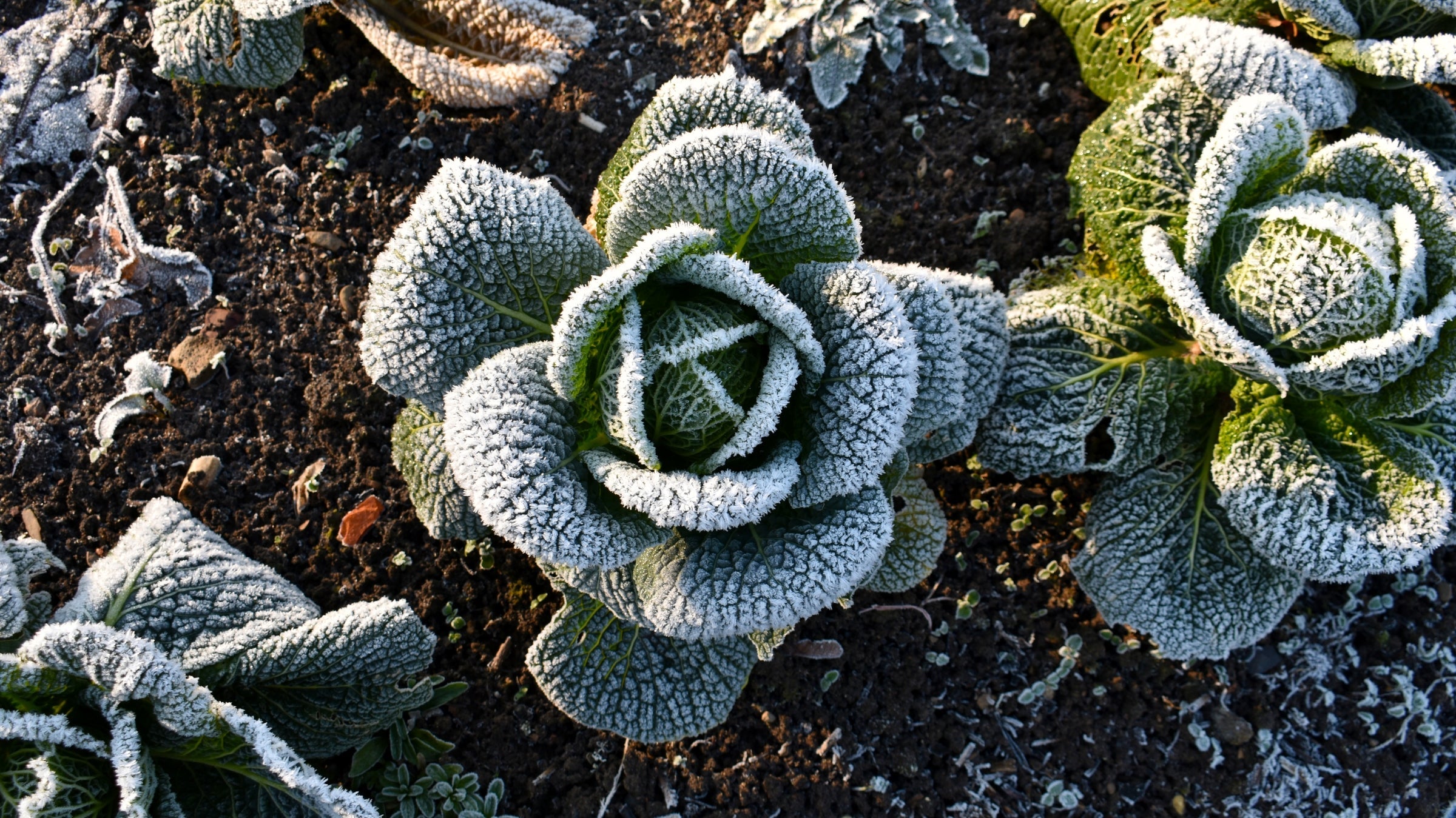How to Prepare Your Vegetable Garden for Winter

(Photo: AMANDA JACKSON/Getty)
As colder weather creeps across the country, you might be turning to your vegetable garden to prepare for the winter months ahead. Here, we asked Jessica Hill, Farm Manager at Jones Valley Teaching Farm in Birmingham, Alabama, for tips and tricks on how to properly harvest and protect your cherished greenery, ensuring your garden will thrive in the coming months.
What Veg Should I Harvest?
Hill recommends that people harvest their summer crops before the first frost of the season. “We generally refer to these as fruiting crops,” she says. “This includes your tomatoes, sweet peppers, hot peppers, eggplant, okra, squash, and cucumber.” Hill also harvests any fragile greens like head lettuce, salad mixes, and chard, and annual herbs like cilantro, dill, and basil.
Herbs with woody stems—rosemary, sage, and oregano—should be fine through the winter, as well as hearty greens (collards, kale, cabbage) and root vegetables (carrots, beets, radishes, turnips).
How Do I Protect My Garden?
When Jones Valley experiences a hard freeze—where temperatures dip to 28 degrees Fahrenheit or below—for more than a week, Hill will throw a row cover over her plants, which can increase the temperature under the cover by up to 10 degrees. While row covers are specially made to trap heat, you can also improvise: “I’ve seen people use a bed sheet or mulch to protect the root system,” she says.
If you are in colder climates and want to extend your growing season deeper into the fall and winter, the Penn State University Extension service recommends setting up a low tunnel hoop, which can be placed over plants to protect against harsh temperatures and weather damage.
What About Cover Crops?
Jones Valley uses a lot of cover crops—fast-growing plants like clover, oats, and buckwheat—on empty plots, which can help maintain soil health, fix nitrogen in the soil, protect against erosion, and suppress weeds. “Usually it’s always good to have something either growing in your soil or covering your soil,” Hill says. The Penn State Extension advises gardeners to sow cover crops at least four weeks before harsh weather and to turn them under at least three weeks before they plan to start planting in the spring.
Time Is Your Friend
Hill’s top advice for gardeners preparing for the winter? Don’t wait, especially when planting veg you can overwinter, like root vegetables and hearty greens. Having these plants experience some warmer temps helps them become hearty enough to tolerate the cold. “Some people plant when it’s too cold and aren’t super successful,” Hill says. “And I think that turns people off from gardening in the fall and winter, but it’s just because the plants weren’t strong enough.”
Jones Valley Teaching Farm is an Outside Find Your Good partner. It offers food-based education to grammar-, middle-, and high-school-aged kids, using food, farming, and the culinary arts as a foundation for academic exploration, leadership, and pursuit of post-secondary pathways.